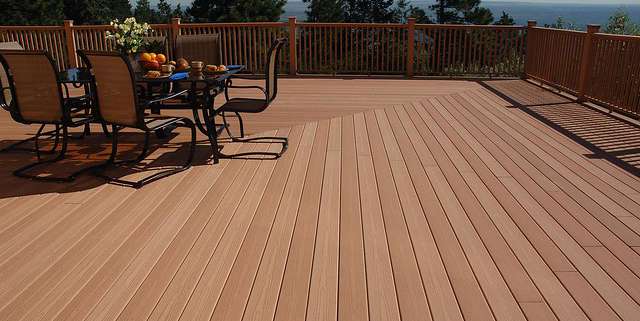
Composite deck material is growing in popularity with improved color retention and durability, making the competition in this market grow. Image Source: Flickr’ Fiberon
Over 15 years ago, my husband and I installed a beautiful cedar deck. That first year it looked perfect; we painstakingly added several coats of stain to protect the surface and bring out the natural wood grains and colors. However, over the years this process had to be repeated again and again, with the tedious effort of removing old stain and sanding the surface clean to start fresh. Now, a decade and a half later, despite all our hard labor, the years have taken their toll and it is time for a replacement. These days, I am much more savvy on the costs of staining, stripping and sanding, not to mention the hours of time that maintenance of real wood consumes. So this time around we are strongly considering composite decking to reduce to labor and cost later on down the road..
Composite decking has come a long way over the past several decades. In the early days of production, color quality in composite deck material was limited and did not hold up well to the natural elements. Fading and degradation were often apparent, diminishing the popularity of these building materials. But despite these initial challenges, the sustainability of composite decking technology still held promise for the future and new industry competition quickly stepped up to the plate. These manufacturers found ways to improve the plastic composite material by using advanced instrumentation to monitor color and quality throughout the production process. Today, modern composite deck companies offer a variety of products with the look and feel of their real wood alternatives. As a result, sales of composite materials have skyrocketed, with last years sales topping the $1 billion mark1. With sales continuing to grow, manufactures are looking for new ways to improve the color stability and quality of their building materials in order to stay competitive in this expanding industry.

Developing color tolerances is necessary for color quality and repeatability. Advance color measurement instrumentation simplifies this process. Image Source: Flickr’ user Russ Koetz


